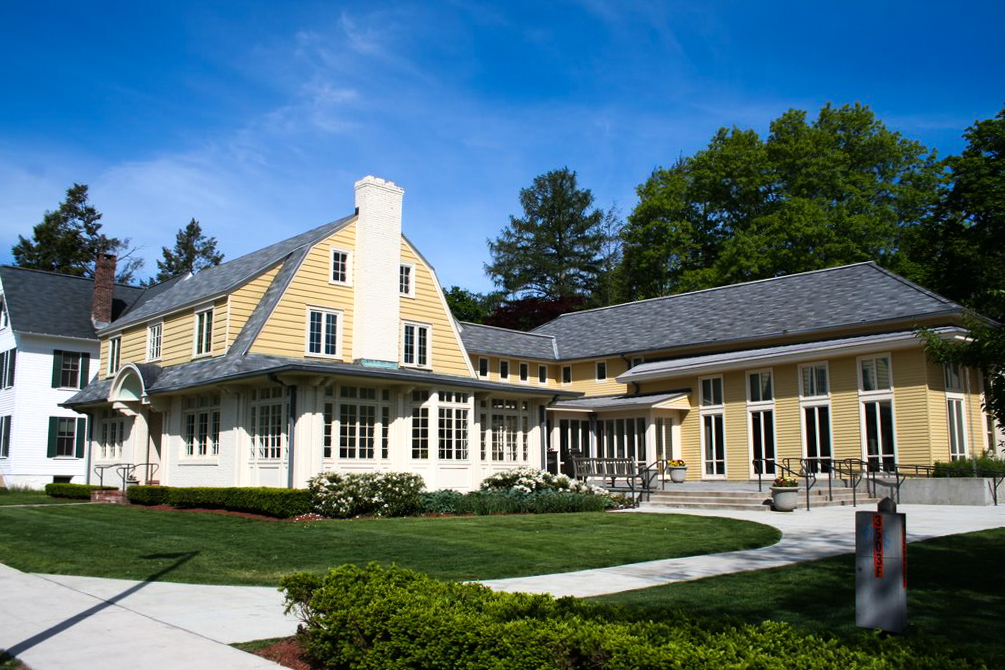
A precipitous rise in applicants has continued this year with the advent of the Class of 2021, which saw a record low 15.4 percent acceptance rate among a crop of 12,543 applicants. The applicant pool has risen 26 percent in the last two years, beating last year’s record number of applicants by over 3 percent, according to Dean of Admission and Financial Aid Nancy Meislahn.
The estimated yield for the class size will be about 765 students, factoring in that 1,100 of the 2,000 admitted students are not expected to matriculate. Accepted students with adequate means will have the chance to visit campus over the next few weeks, including during WesFest, which runs from Wednesday, April 12 to Friday, April 14.
The rise in applications over the past two years has coincided with the ubiquity of the hit musical “Hamilton,” a phenomenon known colloquially as the “Lin-Manuel Bump.” The moniker refers to the writer and star Lin-Manuel Miranda ’02. The University has undergone a boon of mostly positive publicity, and the falling acceptance rate coupled with improving finances after the This Is Why fundraising campaign have elevated its standing in top college rankings.
However, concerns remain about admissions practices after the University’s need-blind policy was rescinded in 2014 for financial reasons, with about 10 percent of each class—including students off of the waitlist—being admitted based on their family’s ability to pay full tuition. Socioeconomic inequality on campus has consistently been a discussion among students, but particularly so recently after the publication of a New York Times article over winter break that showed Wesleyan to be just under the cutoff of U.S. colleges with more students from the top 1 percent of income earners than the bottom 60 percent.
In an interview with The Argus on Wednesday, March 29, President Michael Roth ’78 addressed income inequality in admissions and more broadly in the United States, citing systemic inequality and “economic segregation” in the K-12 school system that leads to disparities at the college level.
“I think the statistics that the Times article used and that get passed around a lot are chilling, but they’re chilling largely by showing what percentage of students from low-income groups are qualified to get into highly selective schools because of the economic segregation that takes place in the K-12 system,” said President Roth. “So if you look at what percentage of people who get between 750 and 800 on their SATs, who are from the top 3 percent versus the bottom 60 percent, I bet you a Coca-Cola that it will also be disconcerting. Is it because the SAT is biased or because the education system that many people have to live with in this country is terribly unjust?”
He added that the University’s improving financial situation means that more money can be added to financial aid for each successive class.
“The most important thing we’re doing is adding to financial aid, so as to ensure that students who do decide to come to Wesleyan are able to have the aid they need to make the most out of their experience while they’re here,” he said. “And so, we’re moving up from a 32 percent discount rate towards the high 30s over the next few years, and what that means is that there will be millions more available for financial aid.”
Roth also emphasized that the University is working to target more low-income students who have the intellectual ability and work ethic to thrive at Wesleyan, but don’t apply because they’re deterred by the sticker price.
One effort the University made to combat economic inequalities in the admissions process was to become test optional, starting with the class of 2019. The logic behind the move was partially to reject the hegemony of the standardized test industry, as wealthier students have a distinct advantage in their ability to pay for preparation courses and tutors.
77 percent of admits in the Class of 2021 submitted standardized test scores.
Similar to the Class of 2020 and 2019, the test score averages of admitted students are markedly higher than previous classes because of the implicit deterrent of lower test scores, with the bottom 25 percent scores now climbing well into the 700s (720 for both math and critical reading).
Other shifts include fewer students entering with four years of a foreign language (81 percent), while more students have taken math through calculus along with biology, chemistry, and physics (89 percent and 84 percent, respectively).
Demographically, 13 percent of all admits are international students, hailing from 70 other countries including Argentina, Cyprus, Ethiopia, India, Iraq, Jamaica, Myanmar, Poland, Rwanda, Saudi Arabia, Thailand, Uganda, United Arab Emirates, Venezuela, Zimbabwe, and The Former Yugoslav Republic of Macedonia.
Not including international students, 39 percent of admits are students of color, while 16 percent would be the first in their family to attend college. 53 percent of the admitted students applied for need-based financial aid.
Perhaps the most notable demographic shift is an all-time high of admitted students hailing from outside of New England (84 percent).
Look out for the Class of 2021 visiting campus throughout April and during WesFest.
Jake Lahut can be reached at jlahut@wesleyan.edu and on Twitter @JakeLahut.



Leave a Reply